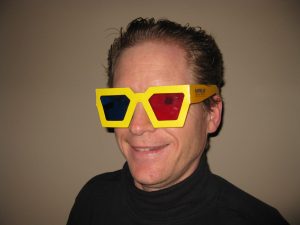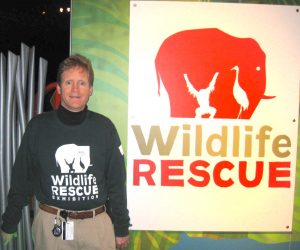
Below is the text of my speech presented at the January 30, 2013 St. Louis South County Toastmasters meeting.
 |
| Johnny Nash |
Anyone remember this 1972 song by American pop singer, Johnny Nash, I Can See Clearly Now ?
Here the beginning lyrics:
I can see clearly now the rain is gone
you can see all obstacles in your way.
Tonight, I want to help you to see clearly. Like the Johnny Nash song, I want to help you see clearly past a big obstacle that is in your way.
The obstacle is this: many people are confused about the difference between climate vs. weather. Who here is confused about the difference between weather vs. climate? My friends, you are going to learn the difference right now:
According to NASA:
Weather is the atmospheric conditions at a certain place at a certain point in time. Weather is short term. It is observed in minutes, hours, days, or weeks. Weather is determining if it is going to be raining tomorrow when you drive to work in St. Louis.
Climate is the average conditions expected at a specific place at a given time. Climate is long term. It is determined over months, years, decades, or longer. Climate is more than likely it is going to be snowing if you visit Mt. Rainer between the months of September to June.
Think of weather vs. climate like this: “Climate is percentage of long underwear vs. shorts in your closest. Weather is deciding to wear long underwear or shorts today.”
Or, “You pick your vacation destination based on the climate but pack your suitcase based on the weather.”
As Mark Twain once said, “Climate is what you expect. Weather is what you get.”
Understanding the difference between weather vs. climate is vital because so many people are confused. Unlike, Johnny Nash, they cannot see clearly now. They have the wool pulled over their eyes.
Too many people make the mistake of saying this time of year, “It is snowing today, therefore climate change cannot be real.”
I heard this crazy statement too frequently when I worked at the temporary Climate Change exhibit at the St. Louis Science Center. One day in March, I was stationed just outside the exhibit to invite people inside. It was snowing by the window, so people kept teasing me saying, “Here’s climate change!” I was very polite, but I wanted to yell back, “No, it’s the weather!”
I even heard my fellow Toastmasters say, “How can scientists predict climate change when they cannot even predict the weather.”
Here is the answer, my friends. Think of weather as the roll of the dice. Is it going to be sunny, snowing or raining tomorrow? Climate is determining which casino gives you the best chance to win when you play with their dice.
Weather is determined by real-time measurements of temperature, wind speed and direction, humidity, rain fall amount, could cover, etc.
Climate is determined by compiled weather statistics over a 30 year period.
The weather today has nothing to do climate change. Or does it?
Over 97% of climate scientists, the Weather Channel, the American Meteorological Society, and the National Weather service clearly think climate change is impacting our weather right now. Even more, every major scientific institution in the world affirms that climate change is real, caused by humans, and it’s impacting or weather right NOW.
When we start our cars or turn on our lights, we are burning oil, gas, and coal. When we burn these fuels, we are releasing carbon dioxide, which is stinking up our planet. Currently, carbon dioxide emissions are roughly 36.7 billion, with a B, metric tons a year or 90 million metric tons a day.
Carbon dioxide traps the earth’s heat like a blanket. Since the beginning of the industrial revolution, humans have increased the amount of carbon dioxide in the atmosphere by over 30%. As a result, since 1880 the average temperature of the planet has gone up about 1.5 degrees Fahrenheit or .8 degrees Celsius.
 |
A global increase 1.5 Fahrenheit over the past 130 years sounds laughable when the temperatures in St. Louis can vary over 20 degrees in one day. However, 1.5 degree rise in body temperature from 98.6 degrees to 100 degrees, you would feel very sick.
When casinos or individual gamblers tamper with dice so it will favor certain numbers, it is called ‘loading the dice.’ With climate change, scientists think we are ‘loading the climate dice.’ By adding lots of carbon dioxide into the atmosphere, we are causing the climate to favor certain weather patterns.
Here are some pie charts illustrating this. What it shows is that our record low and high temperatures in the 1950s were equal. However, there has been a shift that by 2009, record high temperatures were outnumbered record low temperatures 56% to 44%. In 2010, the ratio was 70% record highs, 30% record lows. 2011, 73% record highs to 27% record lows. 2012, the worst yet: 90% record highs to 10% record lows.
Dr. James Hansen, climate scientist from NASA, explains it with these climate dice. In a normal climate, if you were rolling the weather dice, you could expect two sides to produce colder than normal weather, two sides to produce normal weather, and two sides to produce hotter than normal weather. What we have done with climate change is to ‘load the dice’ so that now we have just one side with cooler than normal weather and one side with normal weather. Alarmingly, we now have three sides with warmer than normal and one side that is extremely hot.
Yes, it will still snow with climate change, but the evidence is that we are seeing less cold weather with climate change. As comedian Bill Maher would say, saying it is snowing, therefore climate change is not real, as about as silly as saying, ‘It got dark last night, therefore the sun is not real.’
Or as a friend of mine, Tom Smerling joked, “I hate flu shots. Therefore, the flu cannot be real.”
Hopefully, I helped you see more clearly today. First, you now know difference between weather and climate. Weather is what is happening right now. Climate is the average weather over a period of at least 30 years. Climate is where you pick your vacation (Florida vs. Colorado). Second, if it is snowing outside that is the weather not climate change. Finally, climate change is actually making it less likely to cold and snow today.
As Johnny Nash once sang, you can now see more clearly now, when the snow is falling around. Hopefully, you can see all obstacles in your way. Gone are the dark clouds that had you blind. Because
It’s gonna be a bright (bright), bright (bright)
Sun-Shiny day.















